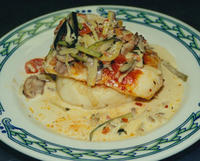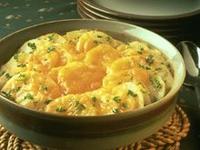See those two banknotes? The top one is a 10-pound British note, the bottom one a 10-pound Scottish note. They have been legitimate currency around the world since long before the United States was even an idea.
As of the close of business Friday, each of them was worth $19.7920 in U.S. currency. It took me less than 30 seconds to ascertain that rate of exchange. It took me only a little more than that to thoroughly confuse three naive employees of the Pioneer Savings Bank's Brunswick, NY, branch office where I do a lot of business.
Perhaps I should say "did" a lot of business. After the rank ineptitude and dismissive attitude I witnessed, I'm seriously considering taking my business elsewhere.
The situation was simply this. I had five 10-pound notes left over from a recent trip to Scotland. That means I had roughly $100 worth of U.S. money tied up in banknotes I couldn't spend locally. So, I went to a bank to exchange the notes for good ol' Yankee greenbacks.
The first teller literally pulled back her hand when I presented the UK notes, as if I had tossed her a red-hot charcoal briquette.
"I don't know what to do with these," she stammered.
"Simple," I said. "Just look up the current rate of exchange and I'll see if I want to trade the notes today or wait till the rate is a little more in my favor."
Not a bad plan, I thought, since the exchange rate was 2.06 U.S. dollars for each British/Scottish pound last week when I got the notes in the Royal Bank of Scotland in Edinburgh -- without the slightest problem, I should add.
"I don't know how," she said, gesturing in a panicky fashion to a young man I took to be an assistant manager of some sort, although throughout my visit he never introduced himself or his title.
"Oh, we can't access that kind of information on these screens," he said, gesturing to the teller's screen and starting to walk away.
"May I suggest you try a computer with Internet access?" I said. "I know you have them here. It only takes a few seconds to get the current exchange rate."
He hemmed and hawed, then pointed in the direction of someone at another window. "She'll have to do this when she's finished with what she's doing," he said rather brusquely, then made a success of retreating to a small office across the lobby. "I have another customer I'm taking care of."
"She" was finished in about three minutes with whatever business she was transacting, then turned to me and asked how she could help.
"I merely want to exchange these five banknotes for U.S. currency. One is a 10-pound British note, and the other four are each 10-pound Scottish notes. But they're all worth the same amount," I explained, wondering why in the world I had to explain something so basic to supposed banking professionals.
She picked up the notes I'd spread on her little teller window ledge and walked to the office where the presumed manager of the moment had scurried. She waited at the doorway for about five minutes till he had completed his business with the other customer. I stood right behind her.
She walked in, put the notes on his desk and said to him, "I don't know what to do with these things. Are they checks, or what?"
"I don't know," he said. "We can't do anything with these anyway."
That was it for me. I walked in the office and, mustering up all the remaining patience I possessed, said, "They're called money. They're not checks, for heaven's sake. Just look at them. All I want is to exchange them back into U.S. currency. And all you have to do is look on the Internet at the currency exchange rate to know how much to give me."
"We can't do that," he said, beginning to sound more miffed than befuddled.
"Why not?" I replied. "This is a bank. You're supposed to, among other things, change money. Any bank in Europe does it for any currency. It's elementary banking."
"Oh, sure," he said with an "Aha!" look. "In Europe. But we're not allowed to do that here. What would we do with the foreign money you gave us?"
"You'd send it to your main office, and they'd exchange it at a favorable rate with a central bank," I said. "You mean to tell me you've never been taught how to make such a basic transaction?"
"Well, we just can't do that," he said, metaphorically -- and perhaps actually, although I couldn't see under his desk -- digging in his heels. "You'll have to go to some other bank."
So, I went home, seething and marveling at just one more example of U.S. insulation from the rest of the real world and wondering if that ever will change.
It's no wonder so many people in other countries think we're such rubes. Many of us are. And Pioneer Savings Bank has a whole cluster of them.
ON THE WEB
• Universal Currency Converter
• Dowd's Guides























